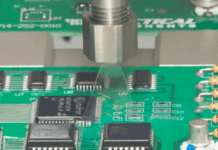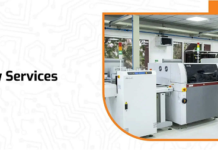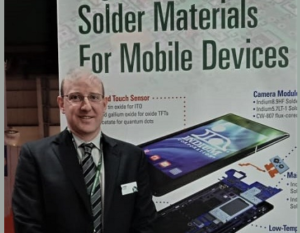
Indium Corporation has a fascinating history of 85 years. Electronics Media spoke to Christopher Nash, Indium Corporation to find out how material science is changing the electronics industry, Indium Corporation business, focus areas for Indian Market and company’s up-coming facility in India. Christopher also talked about significance of Indium metal for electronics industry, solder paste importance in mobile phones, automotive, 5G infrastructure.
Electronics Media: Kindly introduce Indium Corporation and yourself to our readers.
Christopher Nash: I’m Christopher Nash, Product Manager of PCB Assembly Solder Paste for Indium Corporation and I have been with Indium for 15 years now. I work closely with the R&D team to deliver fully scaled, launched, marketable product solutions for PCB Assembly.
“Indium Corporation develops and manufactures materials used in electronics, semiconductor, thin-film, thermal management, and solar markets. Its products include solders, and fluxes; brazes; thermal interface materials; sputtering targets; indium, gallium, germanium, and tin metals and inorganic compounds; and NanoFoil “.
Founded in 1934, Indium Corporation has a long, fascinating history. We got our real start developing indium metal for high- performance aircraft engines during World War II to protect against damage and corrosion. Since then, we have become a global company and have expanded into PCB assembly materials, semiconductor materials, thermal management, and much more.
Being in the industry for over 85 years, Indium Corporation is well-versed with evolving electronic challenges and needs. Materials science is the core of Indium Corporation’s existence. In fact, we believe that materials science changes the world. We also provide solutions to electronics manufacturing and industries to meet the challenges of today’s world.
What is the significance of indium to the electronics industry?
Indium is a semi-precious metal and a malleable material. It is a very important material for today’s electronics industry due to its unique properties. It finds a lot of usage in thermal interface materials.
Electronic devices are getting smaller and much powerful, which increases thermal management demands on the end product. Indium metal has a high thermal conductivity (86W/m-k), which means it heat sinks much faster and better than thermal brazes, or a lot of phase change materials currently available in the market.
Though indium is a little more expensive, its performance benefits outperform the phase change materials. Indium is also used in cryogenic applications and for hermetic sealing, which prevents intrusion of contaminants, such as liquid, solid or gas, into a package for an indefinite period of time. Solder is a very popular application of indium.
Is there any availability issue with indium?
There is no availability issue with indium; actually, there is a lot of indium present in the earth’s core when compared to other materials.
What are the major application areas Indium Corporation is focusing on in the Indian market?
“The Indian market is very exciting for Indium Corporation. We are focusing on Surface Mount Technology, PCB assembly, and materials used for PCB assembly. Solder paste is our main driver for the Indian market.
Our market is primarily focused on mobile phones, automotive, and 5G infrastructure. Solder paste can fulfill a lot of different needs for these three different markets”.
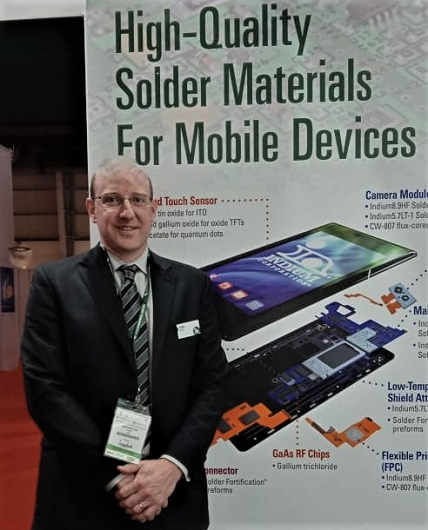
The mobile market is going through a transition. Cell phones are much smaller, and as part of miniaturisation, it is very typical to bring together very tiny components—enclosing them is also a big challenge. We have the ability to print solder paste, placing very small components into the solder paste, and then reflow.
The automotive realm is looking for reliability. There are new challenges, like thermal cycling from -40–150°C, so Indium Corporation develops unique high-reliability solder alloys that allow for thermal cycling up to 3,000 cycles at -40–150°C.
5G is the forefront of everyone’s needs. Considering the point I made earlier about materials science, Indium Corporation is focusing on 5G, materials needs, and challenges the industry faces related to enhancing electrical reliability. We have the number of solutions to enable superior reliability and performance for all packaging needs.
Kindly brief us about Indium Corporation New facility in India?
“We are commissioning a facility in Chennai, India as a manufacturing base for the Indium8.9HF-1 Solder Paste following the Indian government’s Make in India initiative. The Chennai facility, located near Guindy, is a modest size to make solder paste, about 2,800 sq ft. It is expected to go live in November 2019”.
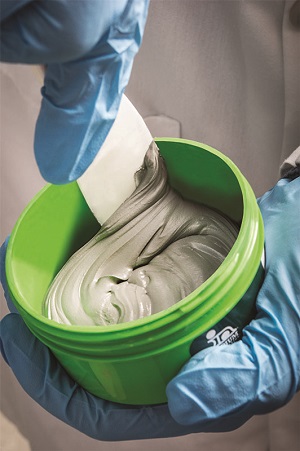
We’ve had a presence in India for over 10 years and have been serving our Indian customers through sales partners. Solder paste is perishable – it has a shelf-life. The new facility will bring us closer to our customers – extending the life of the product by reducing supply time.
What challenges have you seen in this industry so far?
The most impactful challenge I have seen so far is miniaturization. Things are getting smaller, we are trying to pack more in less space, which is a challenge resonating throughout the industry, and cell phones are a core part of it. This brings the need for reliability, more power, and thermal challenges on design sides where they need better thermal performance material. Everyone is looking for reliability and next-generation alloy. It’s a very novel alloy. We have a solution for this need.
Is Indium Corporation all about indium metal?
Indium Corporation is much broader than just indium metal, although indium metal gave us our start. We work with over 300 different alloys. We manufacture inorganic compounds based on indium, gallium, and germanium, and we also produce polymers and nanomaterials.



